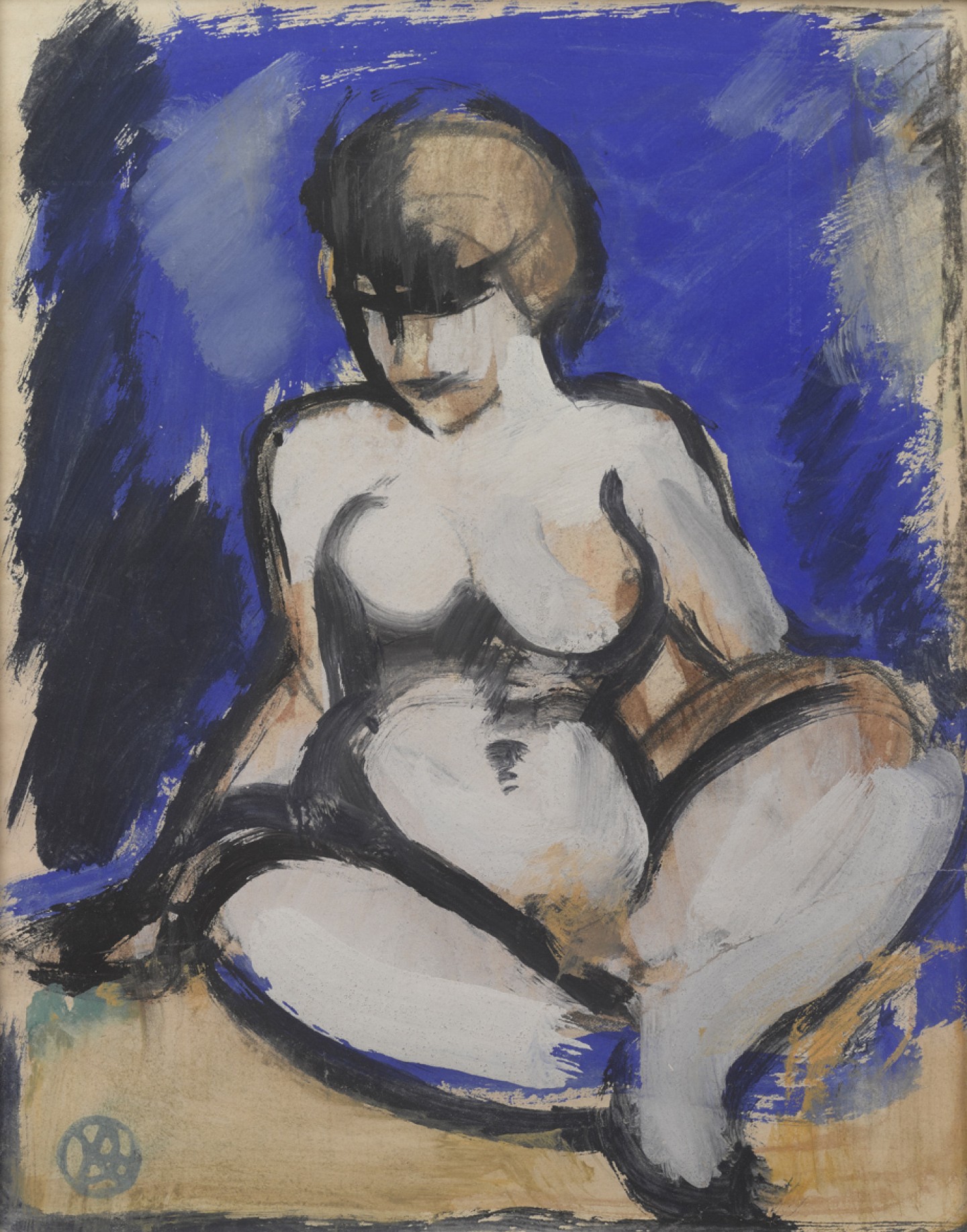DESCRIPTION
In 1913 the dancer and choreographer, Margaret Morris, called unannounced at Fergusson’s Paris studio. Their meeting was a coup de foudre and led to a lifelong partnership. The first years of their life together were spent in London during WW1 centred on Morris’s dance school. After the war, Margaret held summer schools in French resorts including Dinard in 1920 where Fergusson taught art and painted numerous sketches and watercolours. His immediate post-war paintings have a decorative rhythm and frieze-like quality celebrating his love of France – and peace.
DETAILS
-
Artist
John Duncan Fergusson
-
Date
1931
-
Medium
Watercolour on paper
-
Object number
308
-
Dimensions unframed
14.6 × 19.1 cm
-
Dimensions framed
32 × 36 cm
-
Place depicted
Dinard (3021351)
-
Copyright
© Courtesy of The Fergusson Gallery, Perth & Kinross Council
ARTIST PROFILE
John Duncan Fergusson RBA, 1874-1961
Born in Leith, John Duncan Fergusson’s youthful determination to become an artist was underwritten by his wine merchant father, leading to stints at two Paris Académies in the 1890s while on painting trips abroad. He finally settled in Edinburgh where his close friendship with Peploe led to a shared commitment to painting highly accomplished works that echoed the techniques of old masters and French moderns.
His full time move to Paris in 1907 plunged him into the social and artistic ferment with its exhibitions of Picasso, Matisse and Braque. Within months he was showing radical new work, influenced by the Fauves, at the progressive Salon d’Automne. In time Fergusson allied himself to a splinter group of the Fauves known as the Rhythmists, becoming founding art editor of its journal.
A well-built, handsome swagger of a man, Fergusson had always been drawn to charismatic, confident women. The love of his life was Margaret Morris, one of the most innovative choreographers of the early 20th Century, whom he met in Paris before WW1.
The couple spent the war years in London moving back to France between the wars, where Fergusson’s produced a stream of landscapes and portraits that harked back to his pre-war colourist period and absorbed the innovative techniques of cubism. In 1939, Fergusson and Morris settled in Glasgow, where they remained for the rest of his life, revered as the Grand Old Man of the Scottish avant-garde.









